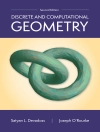Finalist for the PEN/E.O. Wilson Literary Science Writing Award
‘What a fun escape! Reminds me of math books I read when I was coming of age.’ —Neil de Grasse Tyson
An ‘exhilarating’ (Steven Strogatz) tour through the fundamental mathematical concepts—from arithmetic to infinity—that form the building blocks of our universe.
Our universe has multiple origin stories, from religious creation myths to the Big Bang of scientists. But if we leave those behind and start from nothing—no matter, no cosmos, not even empty space—could we create a universe using only math? Irreverent, richly illustrated, and boundlessly creative, The Big Bang of Numbers invites us to try.
In this new mathematical origin story, mathematician and novelist Manil Suri creates a natural progression of ideas needed to design our world, starting with numbers and continuing through geometry, algebra, and beyond. He reveals the secret lives of real and imaginary numbers, teaches them to play abstract games with real-world applications, discovers unexpected patterns that connect humble lifeforms to enormous galaxies, and explores mathematical underpinnings for randomness and beauty. With evocative examples ranging from multidimensional crochet to the Mona Lisa’s asymmetrical smile, as well as ingenious storytelling that helps illuminate complex concepts like infinity and relativity, The Big Bang of Numbers charts a playful, inventive course to existence. Mathematics, Suri shows, might best be understood not as something we invent to explain Nature, but as the source of all creation, whose directives Nature tries to obey as best she can.
Offering both striking new perspectives for math aficionados and an accessible introduction for anyone daunted by calculation, The Big Bang of Numbers proves that we can all fall in love with math.
Про автора
Manil Suri is a distinguished mathematics professor at the University of Maryland, Baltimore County. Author of three acclaimed novels, including The Death of Vishnu, he is a former contributing opinion writer at the New York Times, for which he has written several widely read pieces on mathematics. He lives in Silver Spring, Maryland.












